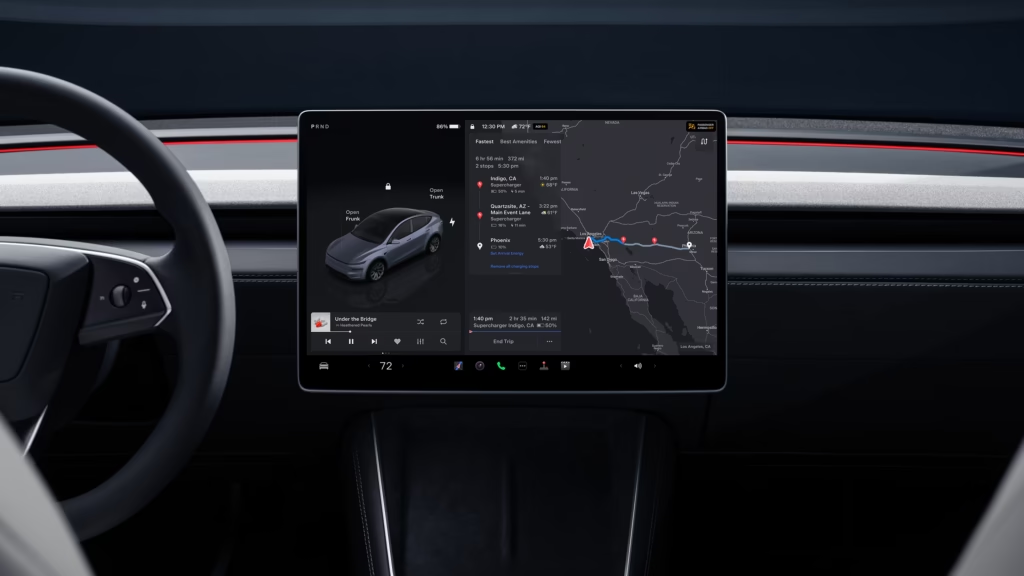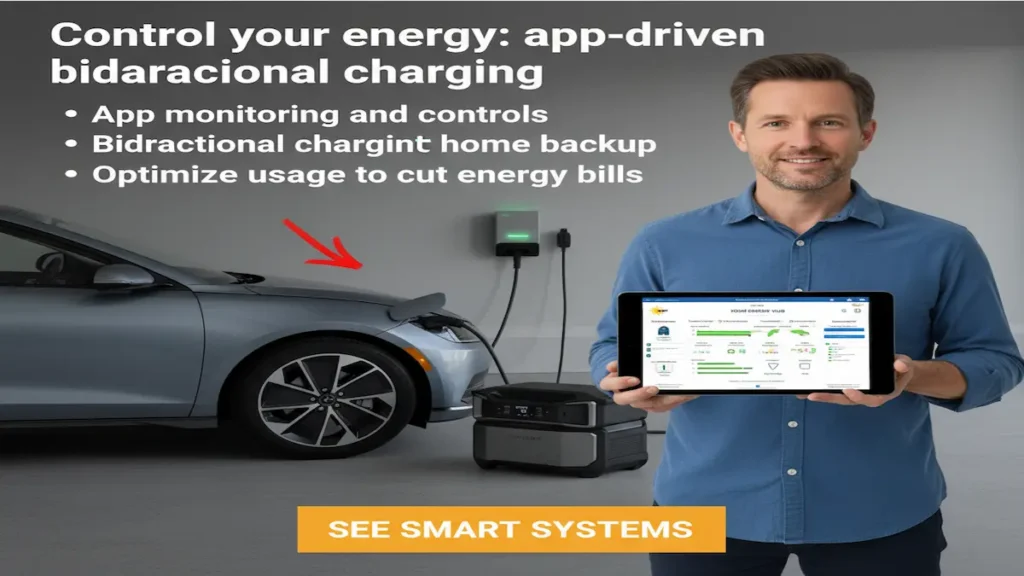Electric driving isn’t about charging from the grid — it’s about powering your own clean energy system. With home solar systems on the rise, increasingly more car owners are pairing their EVs with solar panels to save on charging, become energy independent, and maintain their carbon footprint low.
All electric vehicles are not solar-created equal, though. Some are ready for solar integration, highly efficient to charge, and ready for off-grid or solar installations. Others, such as the Aptera or Lightyear 2, advance the future with solar panels integrated into the vehicle that can actually charge the vehicle itself.
Here are the top EVs of 2025 that provide you with the most out of your residential solar installation — and the technology, equipment, and tools to get you there.
EVs That Pair Seamlessly with Solar Charging

1. Tesla Model 3 & Model Y (2025 Refresh)
Still at the forefront, Tesla’s revised 2025 model lineup is fully compatible with home solar arrays. With energy monitoring via the Tesla app and rapid Level 2 charging, they are designed to function with solar systems like the Zendure Solar Generator or Eco-Worthy Inverter Kits.
2. Aptera Solar EV
Aptera stands in a league of its own — a solar car that provides up to 40 miles of daily range from built-in solar panels. An excellent choice for sunny weather, this ultra-lightweight car is perfect for drivers who want to be completely off-grid.
3. Lightyear 2
Combining aerodynamic efficiency with solar power, the Lightyear 2 will drive up to 800 km (500 miles) on a charge using solar panels. It will arrive in the U.S. market later in 2025.
4. Ford F-150 Lightning
Designed for workday and weekend, the Lightning is energy system-integrated with the home with ease. It supports bidirectional charging, so you can store solar power and feed it back to your home during power outages.
5. Hyundai Ioniq 6
This highly efficient, aerodynamic EV is fast-charging and Bluetti solar generator-capable for backup and portable solar use. Its efficiency also makes it an excellent option for residential solar customers who want the best mileage per kilowatt-hour.
Solar Features to Look For
When choosing an EV for home solar charging, keep the below factors in mind:
- Pre-wiring for solar: Some EV-ready homes come pre-wired for solar-compatible Level 2 charging.
- Solar array compatibility: Ensure that your EVSE (Electric Vehicle Supply Equipment) is compatible with your inverter, for example, the Eco-Worthy 48V inverter and batteries. Portable solar
- solutions: Devices like the Zendure SuperBase V or Bluetti AC200P offer adaptable charging when off-grid or in emergencies.
- Battery storage: Investigate the installation of battery systems to store excess solar energy for nighttime EV charging.
The Technology Behind Solar + EV Charging
New solar technology like solar-electric vehicles, V2H charging, and smart energy dashboards are offering homeowners more control over their energy consumption than ever before. With the integration of solar generators, inverters, and intelligent EV chargers, you can run completely on sunshine — usually for less than 4 cents per mile.
Home Solar vs Off-Grid EV Charging: What’s the Difference?
If you’re considering solar power for your EV, it’s important to know the difference between home solar charging and off-grid EV charging — and what each means for your lifestyle, savings, and independence.
Charging at Home with Grid-Tied Solar
Most homeowners install grid-tied solar systems with the goal of offsetting their energy bills. These systems:
Connect to your local power grid
Supply solar power during the day
Pull from the grid at night or on cloudy days
✅ Benefits:
Eligible for net metering (in many states)
Lower upfront cost than going off-grid
Perfect for daily home + EV use
❌ Limitations:
Doesn’t work during outages (unless paired with battery storage)
Still dependent on the grid
Example:
Emma from Arizona uses a Tesla Wall Connector at home. Her rooftop solar panels power both her home and Model Y during the day, and she gets credits from the utility when she generates more than she uses.
Charging Your EV Completely Off-Grid
Going off-grid means you’re not connected to the utility at all. Your EV charging comes entirely from solar + batteries + possibly a backup generator. This setup is ideal for:
Remote living
Emergency preparedness
Reducing reliance on power companies
✅ Benefits:
100% energy independence
Works even if the grid fails
Great for RVs, cabins, tiny homes
❌ Limitations:
Requires much larger battery banks (to handle EV charging load)
Higher initial cost for inverters, battery storage, and solar panels
Slower charging unless paired with a powerful system
Example:
James lives off-grid in Colorado. He uses a Bluetti AC200 Max solar generator, paired with Eco-Worthy batteries, to charge his Nissan Leaf overnight — all from solar harvested during the day.
Hybrid Option: Best of Both Worlds
Many people use a hybrid setup — grid-tied solar with a backup battery (like Zendure SuperBase V or Bluetti EP500). This gives:
Daytime solar charging
Grid fallback when needed
Power even during blackouts
It’s the most practical choice for suburban homeowners who want savings, convenience, and resilience.
FREQUENTLY ASKED QUESTIONS: Solar-Powered EV Charging
1. Can I charge my EV completely using home solar panels only?
Yes — with a properly sized solar array (typically 5–10 kW), you can quite easily generate enough electricity to charge most EVs on a daily basis, especially with daytime charging or battery storage.
2. What is the benefit of using a solar generator like Zendure or Bluetti for EVs?
Solar generators that are portable provide off-grid functionality, emergency backup, and remote charging perfect for road travel, power outage, or EV owners who love the outdoors.
3. Are solar-powered EVs like Aptera and Lightyear 2 available in the U.S.?
Aptera is an American company and has begun pre-orders for 2025. Lightyear 2 will be available in the U.S. later in 2025 or early in 2026, pending testing and certification.
Top Solar Picks (TSP) Recommended Equipment for Solar EV Owners
Zendure SuperBase V Solar Generator – Strong, smart-app supported, and modular
Eco-Worthy Inverter + Battery Kits – Full solar systems for reliable, daily EV charging
Bluetti AC200P Solar Generator – Versatile power for home use and on the go
Affiliate Note: These tools are suggested by us based on their performance, dependability, and EV-compatibility. When you buy through our links, you’re supporting this website at no additional cost.
Final Thoughts
Pairing your EV with solar in your home is not just the eco-friendly thing to do — it is about owning your energy future. Whether you’re cruising in a futuristic Aptera or a tough F-150 Lightning, solar-friendly EVs in 2025 give you freedom, autonomy, and huge savings. And with technological advancements like Zendure, Eco-Worthy, and Bluetti, it has never been simpler to make your own clean energy system.
Author
Top Solar Picks, founded by John, a Solar Energy Writer and Researcher with over 12 years of experience in renewable energy, is dedicated to helping homeowners and businesses make informed, data-driven decisions about solar power. John’s expertise and research pr...

